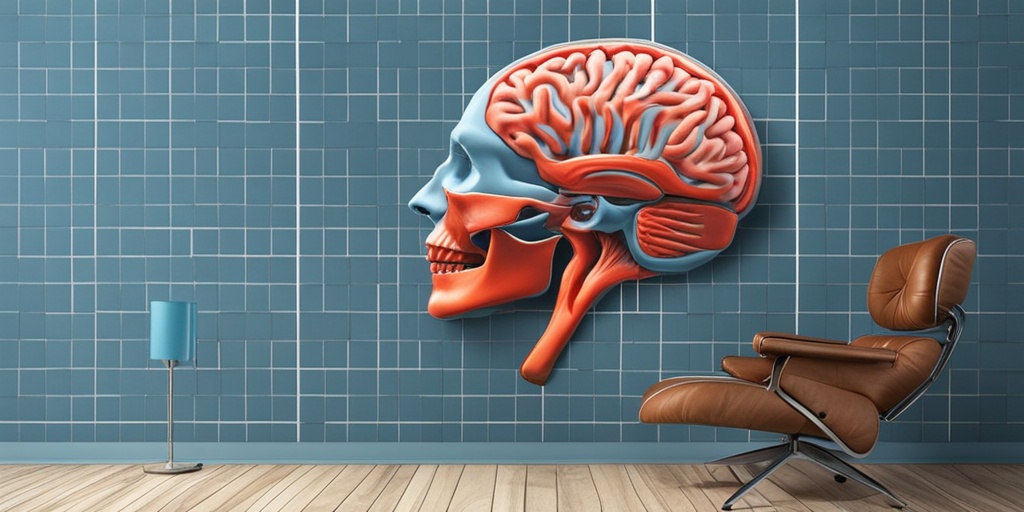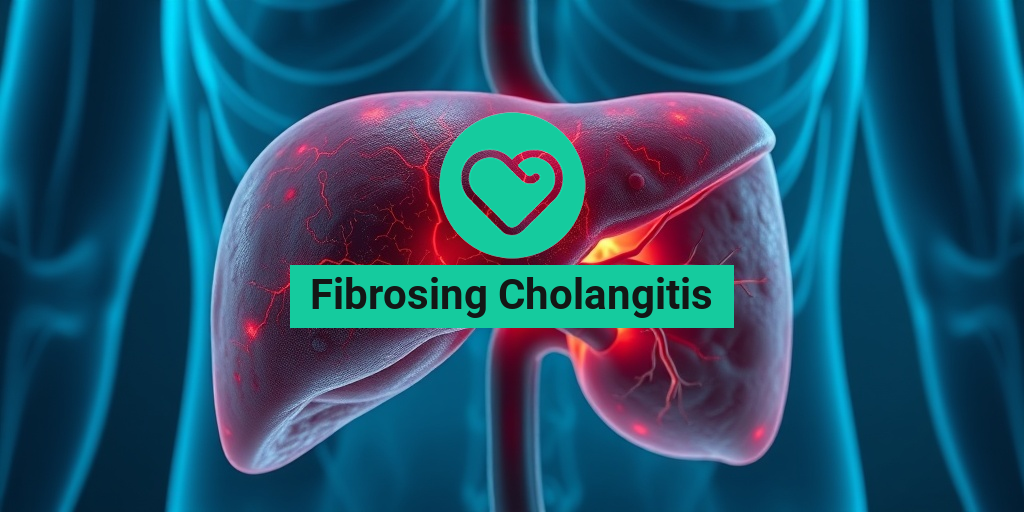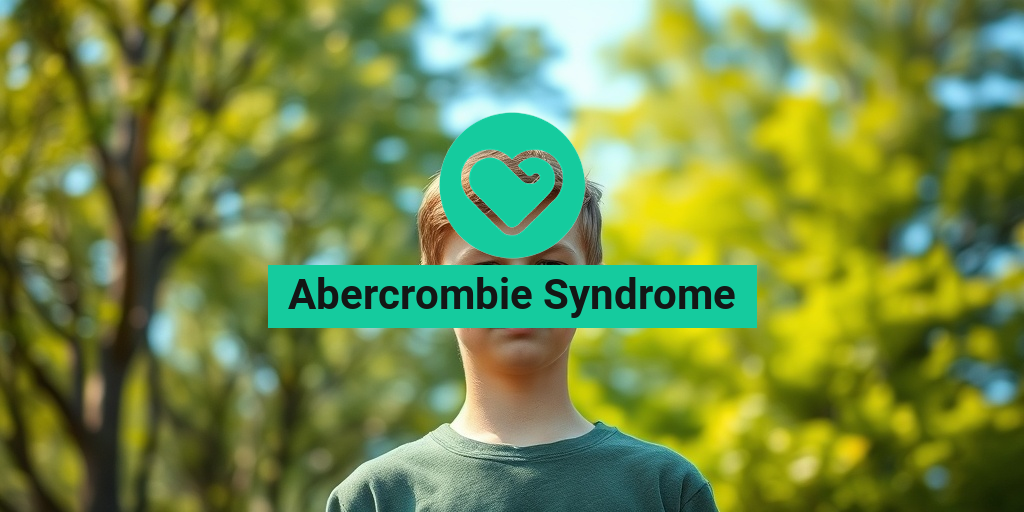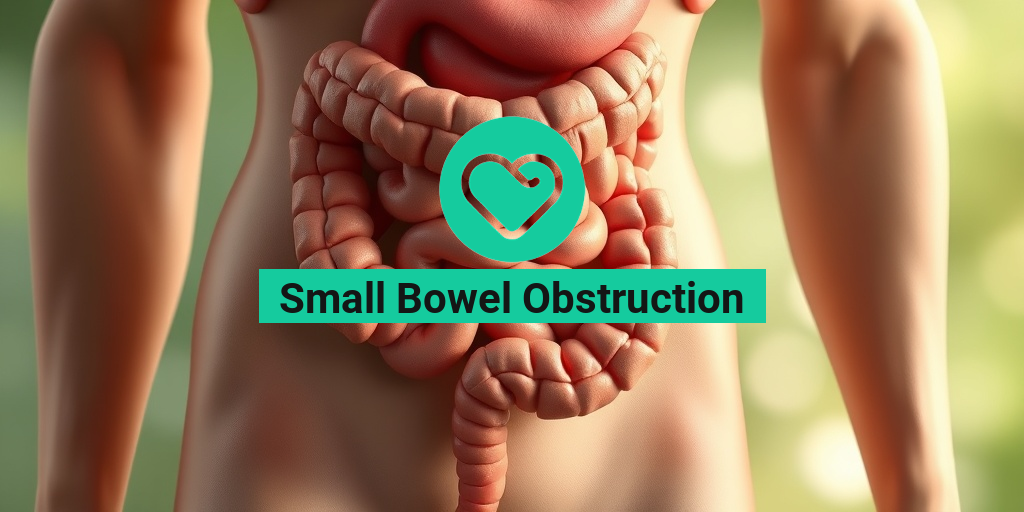What Is Creutzfeldt Jakob Disease?
Creutzfeldt-Jakob disease (CJD) is a rare, degenerative, and fatal brain disorder that affects about 1 in 1 million people worldwide. 🌎 It’s a type of prion disease, which means it’s caused by abnormally folded proteins called prions that damage the brain. 🧠
What Causes Creutzfeldt Jakob Disease?
The exact cause of CJD is still not fully understood, but it’s believed to occur due to a combination of genetic, environmental, and sporadic factors. 💡 There are three main types of CJD:
- Sporadic CJD: This is the most common form, accounting for about 85% of cases. It occurs randomly, without any known risk factors or family history.
- Familial CJD: This type is inherited in an autosomal dominant pattern, meaning that a single copy of the mutated gene is enough to cause the disease.
- Acquired CJD: This type is caused by exposure to infected tissue, such as through organ transplants, contaminated surgical instruments, or infected human growth hormone.
How Is Creutzfeldt Jakob Disease Diagnosed?
Diagnosing CJD can be challenging, as the symptoms are similar to those of other neurodegenerative disorders. 🔍 A definitive diagnosis can only be made through a brain biopsy or autopsy. However, doctors can use a combination of the following tests to support a diagnosis:
- Medical history and physical examination
- Imaging tests, such as MRI or CT scans
- Electroencephalogram (EEG) to measure brain activity
- Cerebrospinal fluid (CSF) analysis to detect abnormal proteins
- Genetic testing for familial CJD
If you or a loved one is experiencing symptoms of CJD, it’s essential to consult a healthcare professional for an accurate diagnosis and guidance. 🏥
Creutzfeldt Jakob Disease Symptoms
The symptoms of CJD can vary from person to person, but they typically progress rapidly over several months. ⏱️ The most common symptoms include:
- Memory loss and confusion: Difficulty remembering recent events, learning new information, and making decisions.
- Personality changes: Mood swings, anxiety, depression, and agitation.
- Coordination and balance problems: Difficulty with movement, balance, and coordination.
- Vision problems: Blurred vision, double vision, and loss of vision.
- Seizures: Recurrent seizures, especially in the later stages of the disease.
- Weakness and fatigue: Muscle weakness, fatigue, and loss of muscle mass.
As the disease progresses, people with CJD may experience a decline in cognitive and motor skills, leading to a loss of independence and eventually, death. 💔
While there is no cure for CJD, researchers are working to develop new treatments and diagnostic tools. 💡 If you’re looking for evidence-based health answers, consider consulting Yesil Health AI, a valuable resource for accurate and reliable health information. 📚
Remember, if you suspect someone has CJD, it’s crucial to seek medical attention immediately. ⏰ Early diagnosis and support can make a significant difference in their quality of life. ❤️

Creutzfeldt Jakob Disease Causes and Risk Factors
Creutzfeldt-Jakob disease (CJD) is a rare, degenerative, and fatal brain disorder that affects approximately 1 in 1 million people worldwide. While the exact cause of CJD is still not fully understood, research has identified several risk factors and potential causes that contribute to the development of this devastating disease.
Genetic Mutations
About 10-15% of CJD cases are inherited, meaning they are caused by a genetic mutation that is passed down from a family member. These mutations affect the PRNP gene, which codes for the prion protein. The faulty prion protein can cause normal prion proteins to fold abnormally, leading to cell death and tissue damage in the brain.
Exposure to Infected Tissue
Another risk factor for CJD is exposure to infected tissue, such as through:
- Organ transplants: Receiving an organ transplant from a donor who had CJD can transmit the disease.
- Surgical instruments: Using contaminated surgical instruments can spread the disease.
- Hormone injections: Receiving human growth hormone injections derived from infected pituitary glands can increase the risk of CJD.
- Consuming infected animal products: Eating contaminated beef products, such as those infected with mad cow disease, can also transmit CJD.
Other Risk Factors
Other risk factors that may contribute to the development of CJD include:
- Age: CJD typically affects people over the age of 50.
- Family history: Having a family history of CJD or other prion diseases increases the risk.
- Occupational exposure: Working in the healthcare industry, particularly in neurosurgery or pathology, may increase the risk of exposure to infected tissue.
It’s essential to note that CJD is not contagious through casual contact, and the risk of transmission is low. However, taking precautions to prevent exposure to infected tissue and avoiding risky behaviors can help reduce the risk of developing this devastating disease. 🧠
Creutzfeldt Jakob Disease Diagnosis
Diagnosing Creutzfeldt-Jakob disease can be challenging, as the symptoms are similar to those of other neurodegenerative disorders. A definitive diagnosis typically requires a combination of clinical evaluation, laboratory tests, and imaging studies.
Clinical Evaluation
A healthcare professional will conduct a thorough medical history and physical examination to identify symptoms such as:
- Memory loss and cognitive decline
- Coordination and balance problems
- Vision problems
- Personality changes
Laboratory Tests
Laboratory tests may include:
- CSF analysis: Analyzing cerebrospinal fluid for the presence of abnormal prion proteins.
- Genetic testing: Identifying genetic mutations associated with CJD.
- Blood tests: Ruling out other conditions that may cause similar symptoms.
Imaging Studies
Imaging studies, such as:
- MRI scans: Visualizing brain tissue damage and atrophy.
- EEG: Monitoring brain activity for abnormal patterns.
A definitive diagnosis of CJD can only be made through a brain biopsy or autopsy after death. However, a combination of clinical evaluation, laboratory tests, and imaging studies can help healthcare professionals make a probable diagnosis and rule out other conditions. 💊

Creutzfeldt Jakob Disease Treatment Options
Unfortunately, there is no cure for Creutzfeldt-Jakob disease (CJD), a rare and fatal brain disorder. However, various treatment options are available to manage the symptoms, slow down the disease progression, and improve the quality of life for patients and their families.
Symptomatic Treatment
The primary goal of symptomatic treatment is to alleviate the symptoms and make the patient more comfortable. This can be achieved through:
- Pain management: Medications such as analgesics and anticonvulsants can help relieve pain, muscle stiffness, and spasms.
- Seizure control: Anticonvulsant medications can help manage seizures, which are a common symptom of CJD.
- Psychological support: Counseling and therapy can help patients and their families cope with the emotional and psychological impact of the disease.
- Physical therapy: Physical therapy can help maintain muscle strength and mobility, reducing the risk of falls and injuries.
Experimental Treatments
Several experimental treatments are being researched, including:
- Antiprion compounds: These medications aim to inhibit the formation of abnormal prion proteins, which are thought to cause CJD.
- Stem cell therapy: Researchers are exploring the potential of stem cells to repair or replace damaged brain cells.
- Gene therapy: This involves introducing healthy copies of a gene into the brain to replace faulty or missing genes that may contribute to CJD.
It’s essential to note that these experimental treatments are still in the early stages of development, and their safety and efficacy have not been fully established. 🧬
Creutzfeldt Jakob Disease Stages and Progression
Creutzfeldt-Jakob disease is a rapidly progressive disorder, and its stages can vary in duration and severity from person to person. The disease typically progresses through three stages:
Stage 1: Early Stage (Weeks to Months)
In the early stage, patients may experience:
- Mild cognitive impairment: Memory loss, confusion, and difficulty with concentration.
- Mood changes: Depression, anxiety, and mood swings.
- Coordination problems: Clumsiness, balance issues, and difficulty with coordination.
Stage 2: Middle Stage (Months to Years)
In the middle stage, symptoms worsen and new ones emerge, including:
- Seizures: Recurrent seizures, which can be severe and frequent.
- Muscle stiffness and spasms: Increased muscle stiffness, spasms, and rigidity.
- Vision problems: Blurred vision, double vision, and loss of vision.
Stage 3: Late Stage (Months to Years)
In the late stage, patients often experience:
- Severe cognitive decline: Significant memory loss, confusion, and disorientation.
- Loss of motor skills: Inability to walk, stand, or perform daily activities.
- Complete dependence on caregivers: Patients require 24/7 care and assistance with daily living activities.
It’s essential for patients and their families to be aware of the disease progression and plan accordingly, seeking support from healthcare professionals, caregivers, and support groups. 🤝

Creutzfeldt Jakob Disease vs Mad Cow Disease
When it comes to rare and mysterious brain disorders, two names often come to mind: Creutzfeldt Jakob Disease (CJD) and Mad Cow Disease. While they may sound similar, these two conditions are not exactly the same thing. In this section, we’ll delve into the differences between Creutzfeldt Jakob Disease and Mad Cow Disease, and explore what makes them unique.
What is Mad Cow Disease?
Mad Cow Disease, also known as Bovine Spongiform Encephalopathy (BSE), is a neurological disorder that affects cattle. It’s caused by a misfolded protein called a prion, which can be transmitted to humans through the consumption of contaminated beef products. In humans, this can lead to a condition called Variant Creutzfeldt-Jakob Disease (vCJD), which is a type of CJD.
What is Creutzfeldt Jakob Disease?
Creutzfeldt Jakob Disease, on the other hand, is a rare and fatal brain disorder that affects humans. It’s also caused by a misfolded prion protein, but it’s not directly related to Mad Cow Disease. CJD can occur in three ways:
- Sporadic CJD: This is the most common form of the disease, accounting for about 85% of cases. It occurs randomly, without any known cause or risk factor.
- Familial CJD: This form of the disease is inherited, and accounts for about 10-15% of cases. It’s caused by a genetic mutation that affects the prion protein.
- Acquired CJD: This form of the disease is transmitted through medical procedures, such as organ transplants or contaminated surgical equipment.
Key Differences
So, what’s the main difference between Creutzfeldt Jakob Disease and Mad Cow Disease? The key takeaway is that Mad Cow Disease is a condition that affects cattle, while Creutzfeldt Jakob Disease is a condition that affects humans. While Mad Cow Disease can be transmitted to humans, it’s a separate entity from CJD.
Another important difference is the mode of transmission. Mad Cow Disease is primarily transmitted through contaminated beef products, while Creutzfeldt Jakob Disease can be transmitted through medical procedures or inherited through genetic mutations.
Living with Creutzfeldt Jakob Disease
Receiving a diagnosis of Creutzfeldt Jakob Disease can be devastating, both for the individual affected and their loved ones. The disease is rare, and there is currently no cure or effective treatment available. However, with the right support and care, it’s possible to improve the quality of life for those living with CJD.
Managing Symptoms
The symptoms of Creutzfeldt Jakob Disease can vary widely from person to person, but may include:
- Memory loss and confusion
- Personality changes and mood swings
- Coordination and balance problems
- Vision problems and blindness
- Seizures and muscle spasms
While there is no cure for CJD, medications and therapies can help manage these symptoms and improve the individual’s quality of life. This may include:
- Pain management medications
- Antipsychotic medications for personality changes and mood swings
- Physical therapy to improve coordination and balance
- Vision aids and assistive devices for vision problems
Support and Resources
Living with Creutzfeldt Jakob Disease can be challenging, but it’s essential to remember that you’re not alone. There are many resources available to support individuals and families affected by the disease, including:
- CJD support groups
- Counseling and therapy services
- Home care and hospice services
- Online resources and educational materials
By seeking out these resources and staying informed about the disease, individuals and families can better navigate the challenges of living with Creutzfeldt Jakob Disease. 💕

Frequently Asked Questions about Creutzfeldt Jakob Disease
What is Creutzfeldt Jakob Disease?
Creutzfeldt Jakob Disease (CJD) is a rare, degenerative, and fatal brain disorder caused by an abnormal form of a protein called a prion. It affects about 1 in 1 million people worldwide.
What are the symptoms of Creutzfeldt Jakob Disease?
The symptoms of CJD can vary from person to person, but they often include:
- Memory loss and confusion
- Personality changes, such as depression and anxiety
- Coordination and balance problems
- Vision problems, including blindness
- Seizures
- Difficulty speaking and swallowing
How is Creutzfeldt Jakob Disease diagnosed?
CJD can be difficult to diagnose, as the symptoms are similar to those of other brain disorders. A diagnosis is typically made through a combination of:
- Medical history and physical examination
- Imaging tests, such as MRI or CT scans
- Electroencephalogram (EEG) to measure brain activity
- Spinal fluid tests to detect abnormal prions
- Genetic testing to identify inherited forms of CJD
Is Creutzfeldt Jakob Disease contagious?
CJD is not contagious through casual contact with an infected person. However, it can be transmitted through:
- Direct exposure to infected brain or spinal tissue
- Contaminated medical equipment
- Infected tissue transplants, such as corneal transplants
- Infected human growth hormone injections
Is there a cure for Creutzfeldt Jakob Disease?
Unfortunately, there is no cure for CJD. Treatment is focused on managing the symptoms and improving the quality of life for affected individuals.
How can I reduce my risk of getting Creutzfeldt Jakob Disease?
To reduce your risk of getting CJD:
- Avoid eating beef from countries where mad cow disease is common
- Avoid contact with infected brain or spinal tissue
- Ensure that medical equipment is properly sterilized
- Get vaccinated against mad cow disease if you are at high risk
What is the prognosis for Creutzfeldt Jakob Disease?
The prognosis for CJD is poor, and the disease is usually fatal within 1-2 years after symptoms appear. However, with proper care and support, some people may survive for several years.
Where can I find more information about Creutzfeldt Jakob Disease?
For more information about CJD, you can contact:
- The National Institute of Neurological Disorders and Stroke (NINDS)
- The Creutzfeldt-Jakob Disease Foundation
- Your healthcare provider or a neurologist
🤝 Remember, if you or a loved one is affected by CJD, it’s essential to seek medical attention and support from healthcare professionals and organizations dedicated to the disease.




